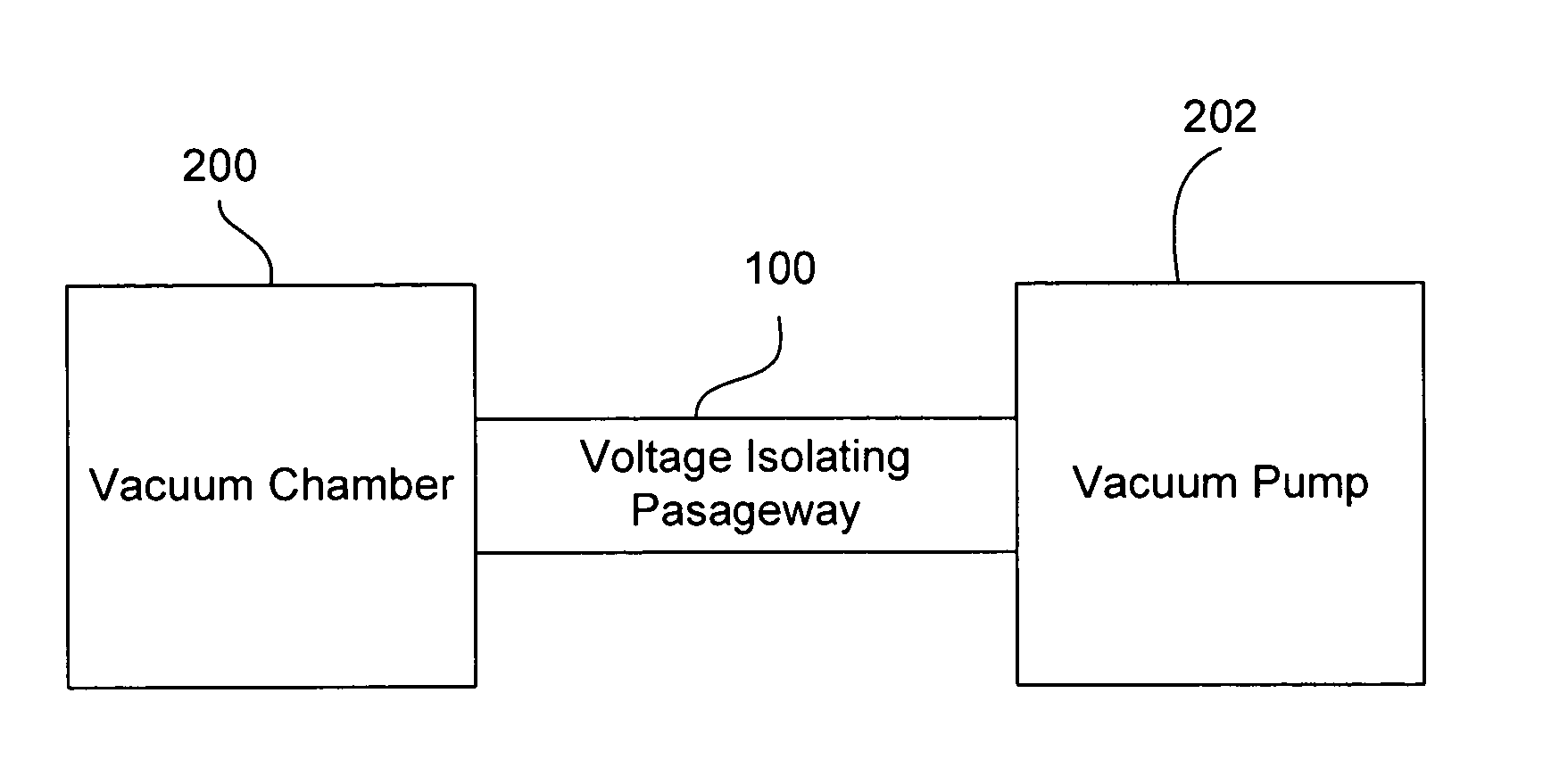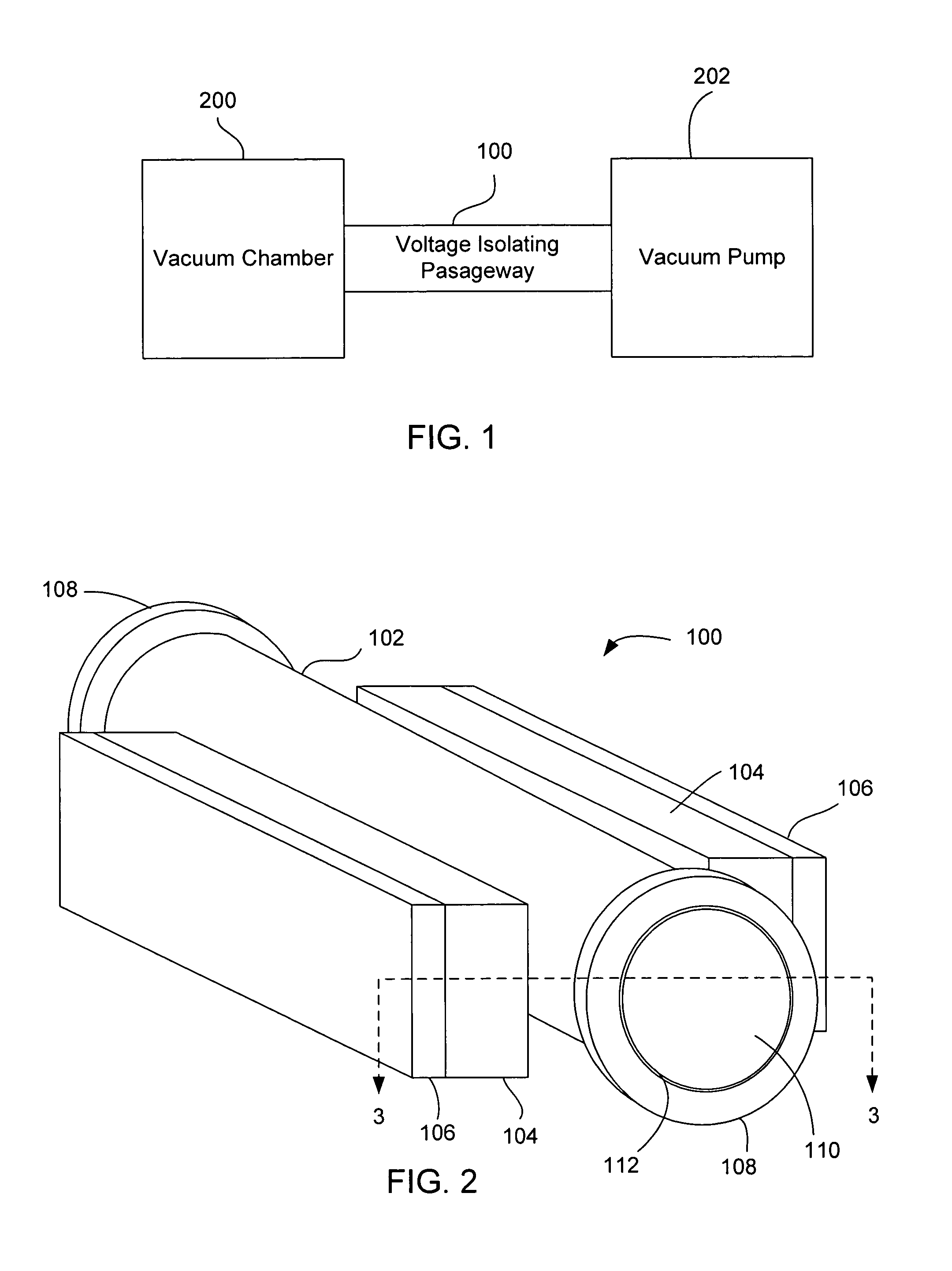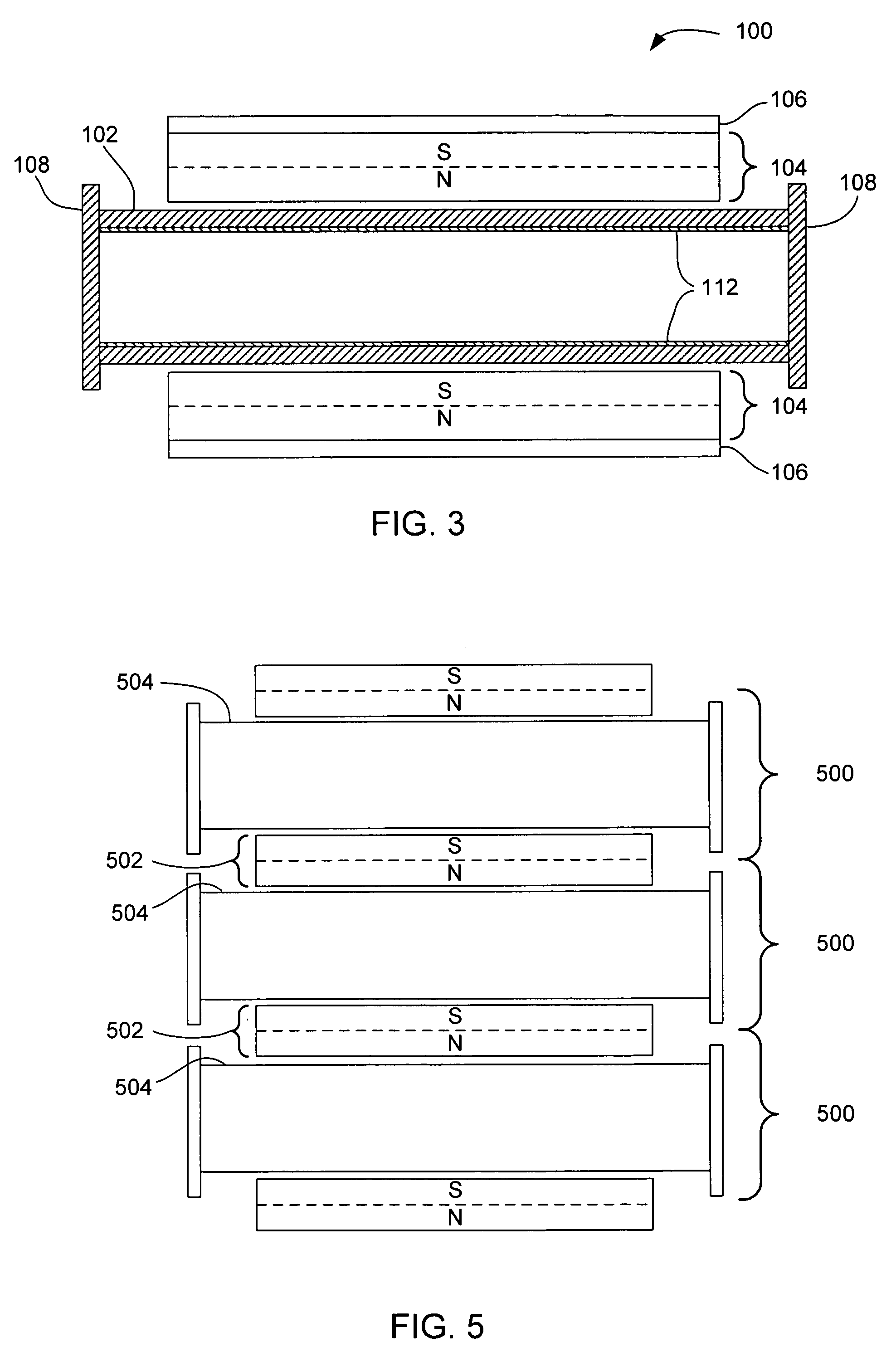Transverse magnetic field voltage isolator
a transverse magnetic field and voltage isolator technology, applied in the field of voltage isolation, can solve the problems of impracticality, ineffective technique in reducing the breakdown threshold voltage, and problematic avalanche ionization, so as to reduce the probability of avalanche ionization, reduce collision energy, and reduce the effect of electron potential energy
- Summary
- Abstract
- Description
- Claims
- Application Information
AI Technical Summary
Benefits of technology
Problems solved by technology
Method used
Image
Examples
Embodiment Construction
[0021]The present invention will now be described in detail with reference to a few preferred embodiments thereof as illustrated in the accompanying drawings. In the following description, numerous specific details are set forth in order to provide a thorough understanding of the present invention. It will be apparent, however, to one skilled in the art, that the present invention may be practiced without some or all of these specific details. In other instances, well known operations have not been described in detail so not to unnecessarily obscure the present invention.
[0022]The present invention pertains to techniques for increasing the breakdown threshold voltage at which avalanche ionization can occur within low-pressure environments. One specific implementation of the invention involves providing high voltage isolation between a vacuum chamber and a vacuum pump in pressure range of approximately 1 mill-Torr-1 Torr with little or no current load on the voltage source and withou...
PUM
 Login to View More
Login to View More Abstract
Description
Claims
Application Information
 Login to View More
Login to View More - R&D
- Intellectual Property
- Life Sciences
- Materials
- Tech Scout
- Unparalleled Data Quality
- Higher Quality Content
- 60% Fewer Hallucinations
Browse by: Latest US Patents, China's latest patents, Technical Efficacy Thesaurus, Application Domain, Technology Topic, Popular Technical Reports.
© 2025 PatSnap. All rights reserved.Legal|Privacy policy|Modern Slavery Act Transparency Statement|Sitemap|About US| Contact US: help@patsnap.com



